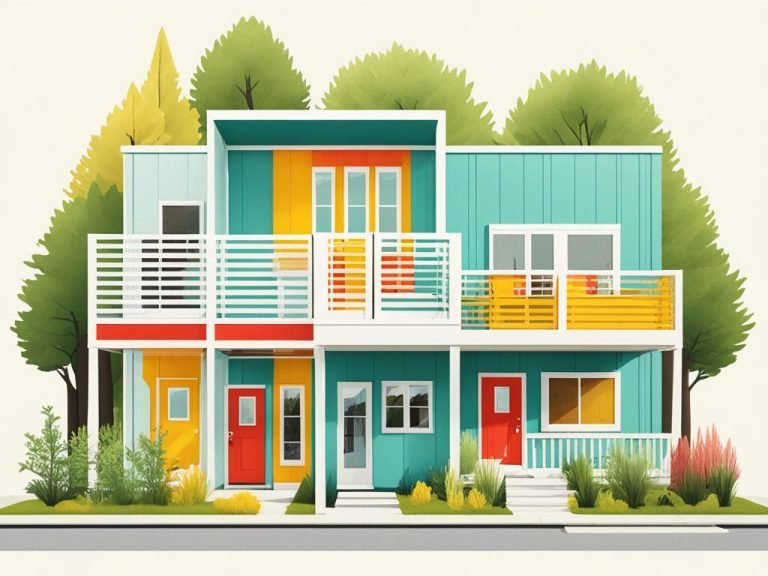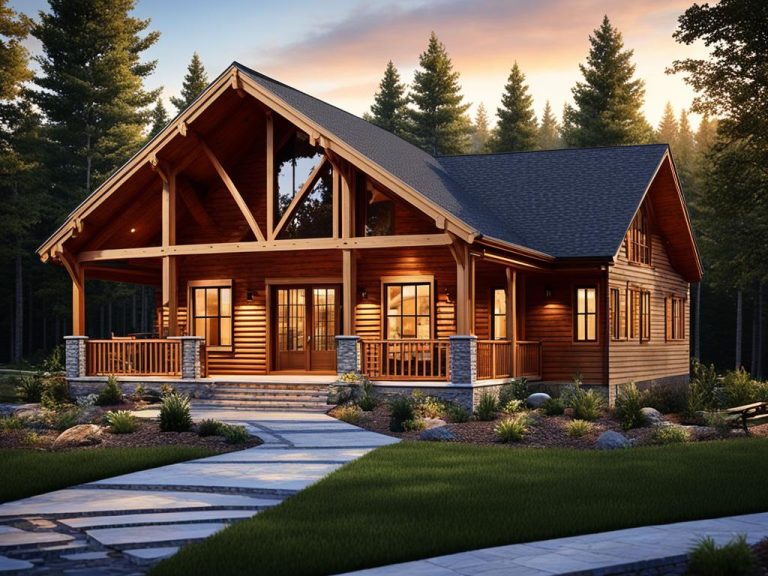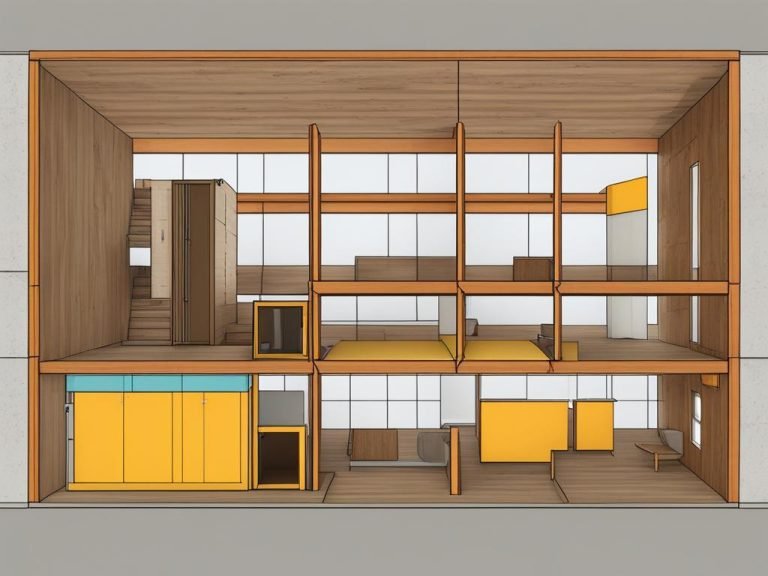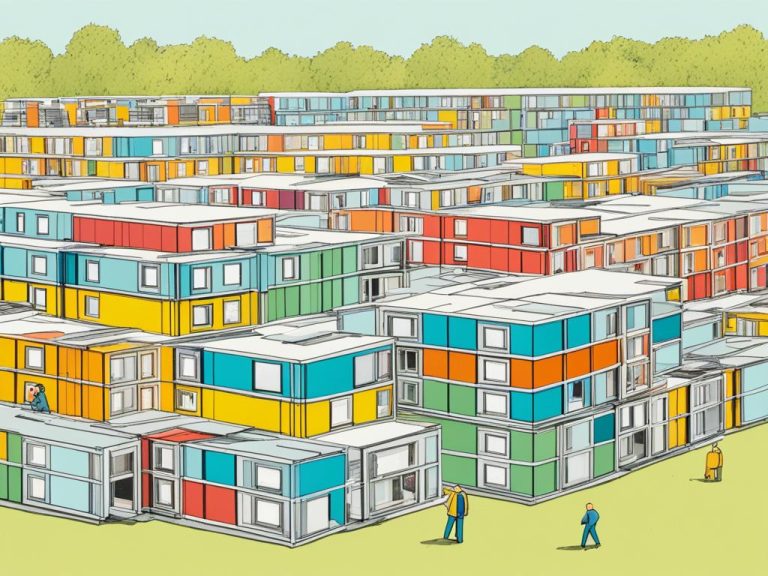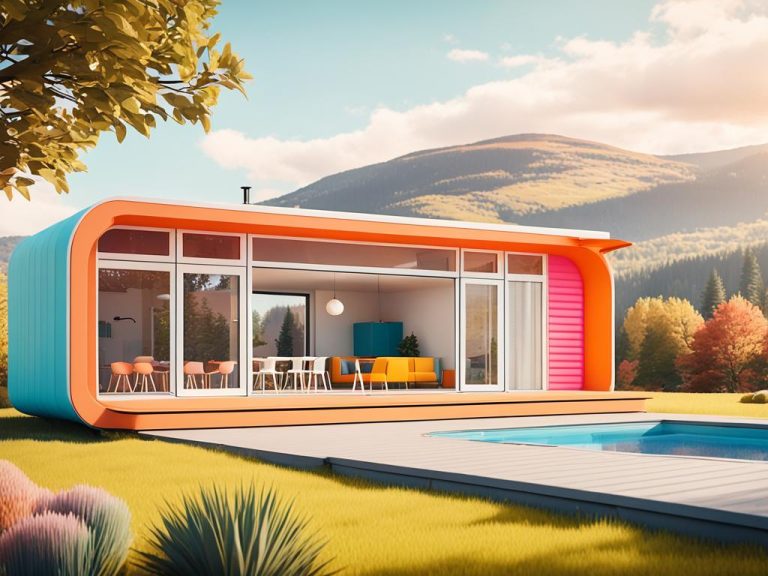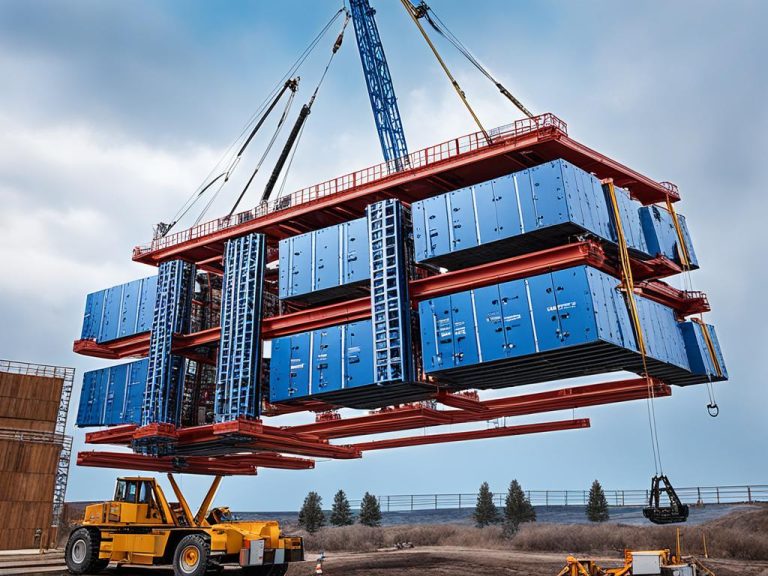Modular House 3D Modelling – Best Ways to Model a Prefab House
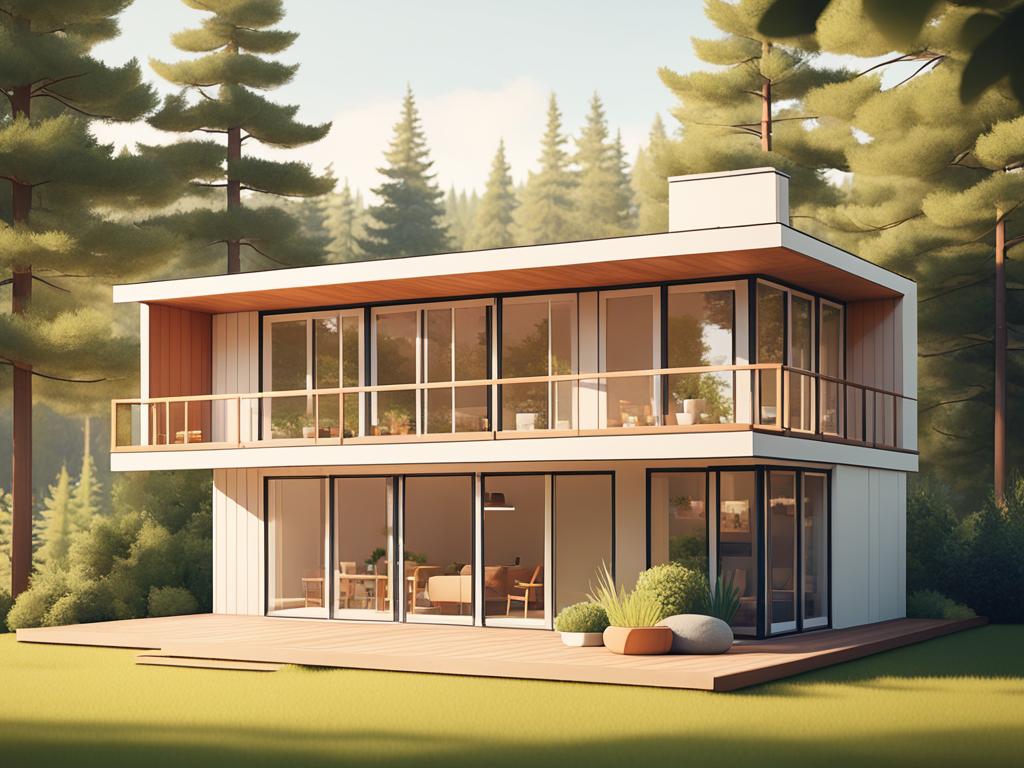
Designing a prefab home offers several advantages, including increased efficiency, environmental sustainability, and unparalleled customization. Prefabricated homes are constructed by assembling factory-produced structural and architectural components. The design phase utilizes Building Information Modelling (BIM) software to create detailed 3D models. Materials such as wood, steel, and concrete are commonly used in modern prefab home design. BIM plays a crucial role in managing the entire design process and allows for the customization of every aspect of the project.
Key Takeaways:
- Designing a prefab home offers increased efficiency, sustainability, and customization.
- Prefab homes are constructed using factory-produced components and assembled on-site.
- BIM software is vital in creating detailed 3D models and managing the design process.
- Wood, steel, and concrete are commonly used materials in prefab home design.
- Customization is a key aspect of prefab home design, facilitated by BIM software.
What Are Prefab Homes?
Prefab homes, also known as prefabricated houses, are constructed using a construction methodology that involves factory production of structural and architectural components. These components are later transported to the construction site for assembly. Prefab homes can include various building types such as single-family residences, multifamily buildings, offices, and schools.
The construction process involves designing the prefab building, factory production of building components, transportation and assembly of the components, and finishing work.
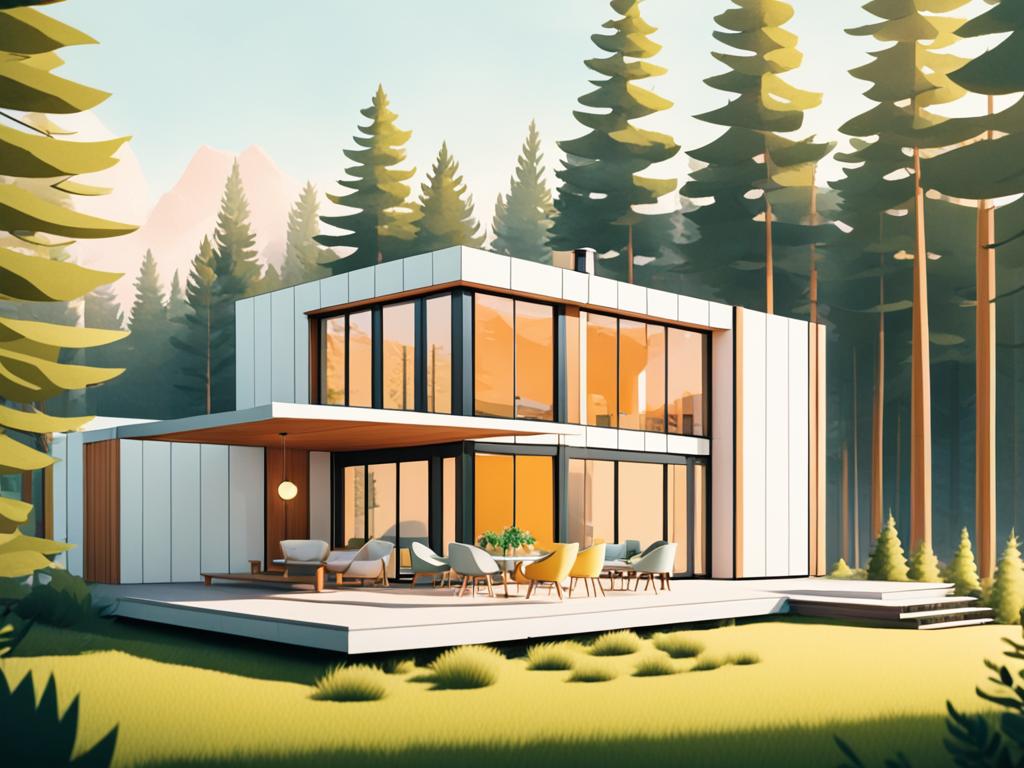
Designing Prefab Homes
When it comes to designing prefab homes, the selection of materials plays a crucial role in creating functional and aesthetically pleasing structures. The use of prefab materials such as wood, steel, and concrete offers numerous advantages in modern prefab home design.
Wood is a versatile and sustainable material that provides flexibility in design. Its natural beauty and warmth make it a popular choice for prefab homes. Not only does wood offer great insulation properties, but it also allows for easy customization and modification.
Steel is renowned for its structural strength and durability, making it an ideal material for prefab homes. It offers excellent resistance to earthquakes and extreme weather conditions. Additionally, steel can be easily fabricated off-site, minimizing construction time and costs.
Concrete is commonly used for foundations and load-bearing structures in prefab homes. Its strength and durability ensure the long-term stability and structural integrity of the building. Moreover, concrete provides excellent thermal mass, contributing to energy efficiency and sustainable design.
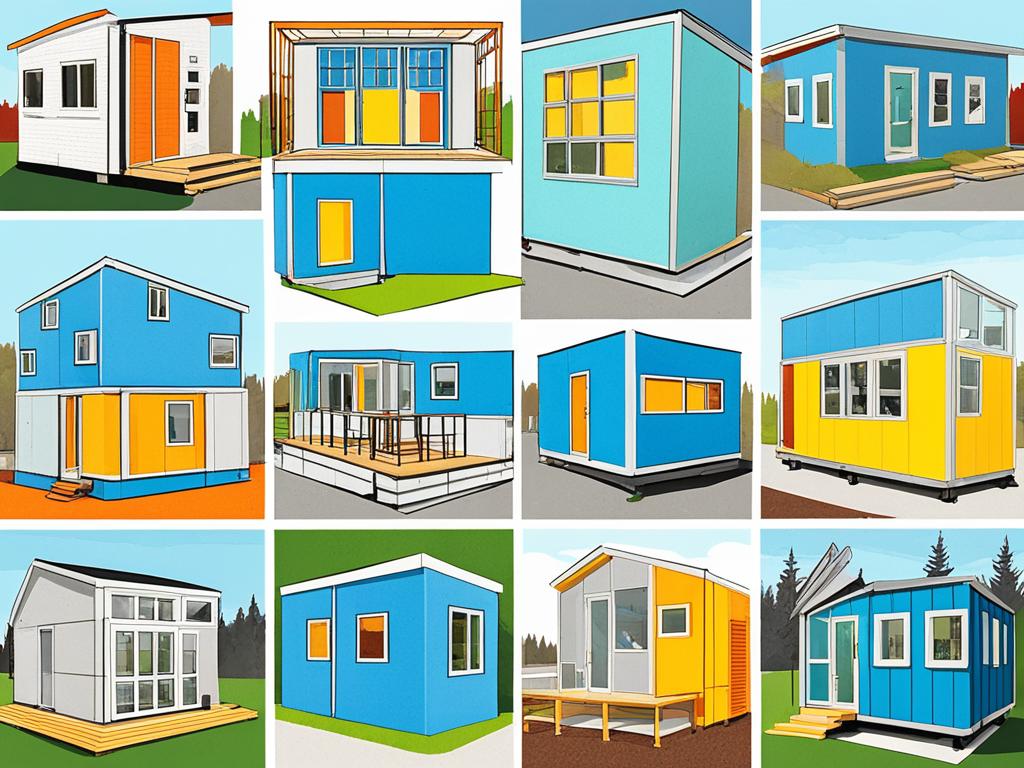
The Role of Building Information Modeling (BIM)
In the design process of prefab homes, Building Information Modeling (BIM) software plays a critical role. BIM enables architects and designers to create detailed digital models of the prefab components, allowing for accurate visualization and analysis.
With BIM, project stakeholders can collaborate effectively, integrating design and construction processes seamlessly. The software enables real-time collaboration, reducing errors and enhancing communication among architects, engineers, and contractors.
BIM also allows for customization, as every aspect of the prefab home can be digitally modeled and modified. From floor plans to finishes, BIM empowers homeowners to customize their dream homes according to their specific requirements and preferences.
Overall, the design of prefab homes incorporates the judicious choice of materials, utilizing their unique properties and benefits. The integration of Building Information Modeling (BIM) enables precise visualization, collaborative design, and customization, making prefab homes a versatile and sustainable housing solution.
Advantages of Prefab Homes
Prefab homes offer several advantages that make them an attractive option for homeowners. Whether you’re looking to build your dream home or a cost-effective investment property, prefab homes can offer significant benefits.
- Time and Cost Savings: One of the key advantages of prefab homes is the time and cost savings they provide. By utilizing factory production of components, prefab homes can be built in a fraction of the time compared to traditional construction methods. This streamlined process reduces labor costs, material waste, and potential project delays. As a result, homeowners can move into their new prefab home faster, saving both time and money.
- Energy Efficiency: Another advantage of prefab homes is their focus on energy efficiency. With rising energy costs, homeowners are increasingly looking for ways to reduce their carbon footprint and save on utility bills. Prefab homes are often designed with energy-efficient features such as insulation, low-E windows, and energy-efficient appliances. These measures help to effectively regulate indoor temperature and reduce heating and cooling costs over time, saving homeowners money while minimizing environmental impact.
- Customization: Customization is a key aspect of prefab homes that sets them apart from traditional construction methods. Homeowners have the opportunity to actively participate in defining the floor plan, materials, finishes, and interior design of their prefab home. This level of customization allows homeowners to create a home that reflects their unique style and preferences. With the use of Building Information Modeling (BIM) software, the customization process becomes even more seamless, as homeowners can easily visualize and make changes to the design before construction begins.
Overall, prefab homes offer an efficient and customizable solution for those looking to build their dream home. With the time and cost savings, energy efficiency, and the ability to personalize every aspect of the design, prefab homes are a compelling option for modern homeowners.
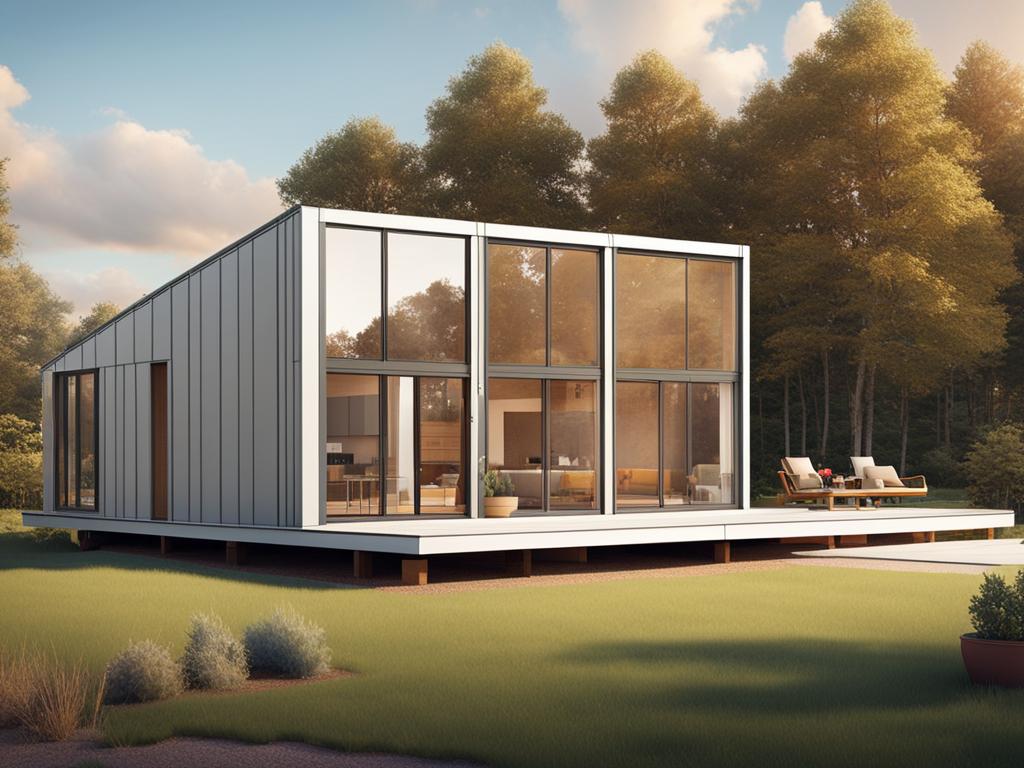
Prefab Homes in Green Building
Prefab homes play a significant role in green building, emphasising sustainable, environmentally friendly practices that reduce the impact of construction and prioritize occupant well-being. These homes utilize eco-friendly materials, incorporate water conservation measures, and ensure indoor air quality control, making them key contributors to sustainable living.
One of the essential aspects of green prefab homes is the use of environmentally friendly materials. These materials are carefully selected to minimize the negative impact on the environment, both during production and throughout the home’s lifecycle. From sustainably sourced wood to recycled materials, green prefab homes are designed with a focus on eco-consciousness.
Water conservation and management are also integral to green prefab homes. Through the use of innovative technologies and thoughtful design, these homes are designed to minimize water consumption. This includes incorporating systems for rainwater harvesting, greywater recycling, and efficient irrigation methods.
Indoor air quality is another crucial consideration in green prefab homes. These homes are meticulously designed to ensure optimal air quality for the occupants. Advanced ventilation systems, low-VOC (volatile organic compounds) finishes, and careful selection of building materials contribute to a healthy and comfortable indoor environment.
To further demonstrate the commitment to sustainability, many green prefab homes pursue environmental certifications such as LEED (Leadership in Energy and Environmental Design). These certifications recognize buildings that meet rigorous sustainability standards, affirming the eco-sustainable nature of prefab homes. Acquiring an environmental certification serves as a testament to the dedication to creating homes that prioritize environmental responsibility.

Integration of BIM Workflow in Prefab Construction
In the realm of prefab construction, the integration of BIM workflow plays a vital role in streamlining the design and visualization process. Building Information Modeling (BIM) software empowers architects and designers to create accurate and detailed 3D models of prefab components and modules. This level of precision enables better coordination and visualization throughout the construction project.
With BIM, efficient planning and material management become achievable realities. Quantity takeoffs, material schedules, and procurement data can all be seamlessly managed, ensuring a smooth and well-organized construction process. This level of precision reduces potential delays and boosts overall efficiency.
One of the key benefits of integrating BIM workflow in prefab construction is the improvement of collaboration and communication among project stakeholders. BIM serves as a central hub for project data, allowing architects, engineers, contractors, and other stakeholders to access and share information in real-time. This fosters a collaborative environment where decisions can be made faster and more effectively.
BIM workflow integration also enhances clash detection capabilities and quality assurance. By simulating the construction process in a virtual environment, potential clashes or conflicts between different building elements can be identified and resolved proactively. This mitigates costly rework and ensures a higher level of quality in the final product.
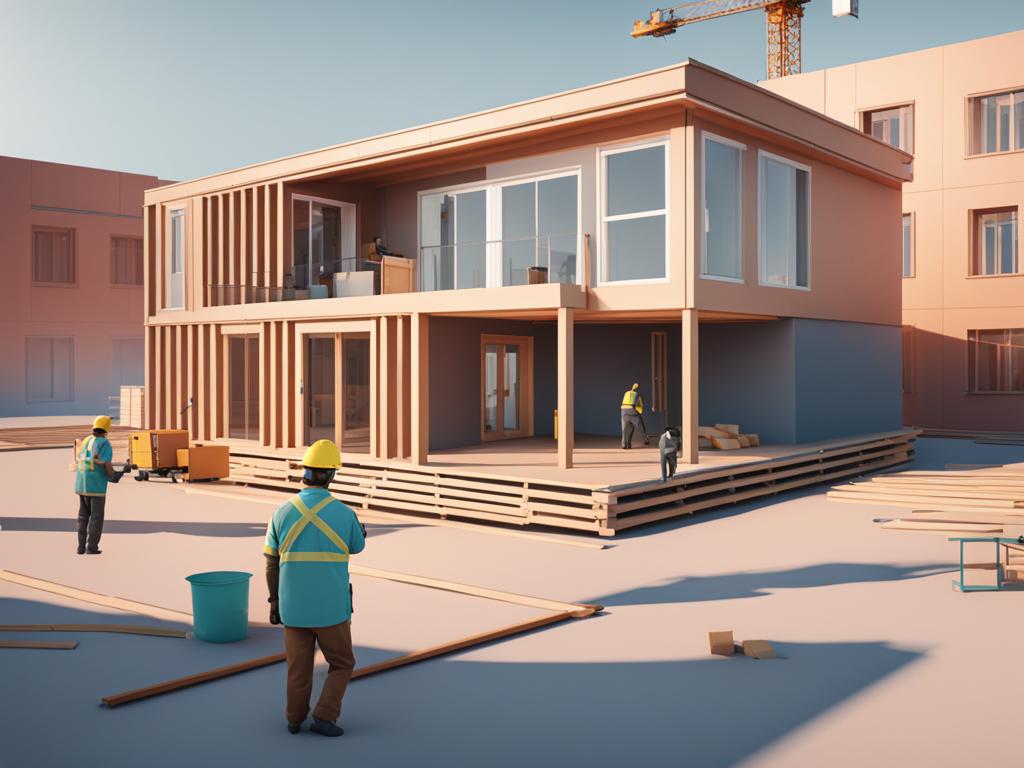
Conclusion
The integration of BIM in prefab construction has revolutionised the industry, bringing numerous benefits to project stakeholders. BIM streamlines design, enhances collaboration, detects clashes, improves project efficiency, and saves time and costs. This powerful technology allows for precise 3D modelling, enabling better coordination and visualisation of prefab components and modules. The result is improved project outcomes and a more efficient construction process.
By combining prefab construction methods with BIM, the industry promotes sustainability and offers a high level of customisation. Prefab homes can be tailored to meet specific design requirements and incorporate eco-friendly materials and energy-efficient features, reducing their environmental footprint. With BIM as a central hub for project data, collaboration and communication among stakeholders are enhanced, leading to better decision-making and smoother project execution.
Looking ahead, the future of prefab construction lies in the continued adoption and advancement of BIM. As the construction industry embraces digital transformation, BIM in prefab construction will play a pivotal role in reshaping the way homes are built. By leveraging the benefits of BIM, such as improved design efficiency, reduced costs, and enhanced sustainability, the industry is poised for an efficient and sustainable future.
FAQ
What is a modular house 3D model?
A modular house 3D model is a digital representation of a prefabricated house created using 3D modeling software. It allows architects and designers to visualize and refine the design of a modular house before construction begins.
How is a modular house designed?
The design of a modular house involves using Building Information Modeling (BIM) software to create detailed 3D models. This software helps architects and designers plan and customize every aspect of the house, from the floor plan to the materials and finishes.
What are the advantages of prefab homes?
Prefab homes offer several advantages, including time and cost savings due to factory production and rapid on-site assembly. They are also energy-efficient, customizable, and can be designed to meet green building standards. Additionally, prefab homes allow for greater control over the design process.
What materials are commonly used in prefab home design?
Modern prefab home design often utilizes materials such as wood, steel, and concrete. Wood provides versatility and sustainability, steel offers structural strength and durability, and concrete is ideal for foundations and load-bearing structures.
What is the role of BIM in prefab home design?
Building Information Modeling (BIM) software plays a crucial role in the design process of prefab homes. It allows for the creation of detailed digital models, facilitates design visualization, promotes collaboration among project stakeholders, and enables efficient planning and material management.
How do prefab homes contribute to green building?
Prefab homes play a significant role in green building by focusing on reducing the environmental impact of construction and promoting occupant well-being. Eco-friendly materials, water conservation measures, and indoor air quality control are fundamental practices in green prefab homes.
What is the integration of BIM in prefab construction?
The integration of Building Information Modeling (BIM) in prefab construction revolutionizes the industry. It streamlines the design and visualization process, enhances collaboration and communication among project stakeholders, detects clashes, improves project efficiency, and saves time and costs.
What is the future of prefab construction with BIM?
As the construction industry continues to embrace digital transformation, the combination of prefab construction methods and BIM is poised to reshape the way homes are built. It paves the way for an efficient and sustainable future, promoting better project outcomes and an increased focus on customization and sustainability.

